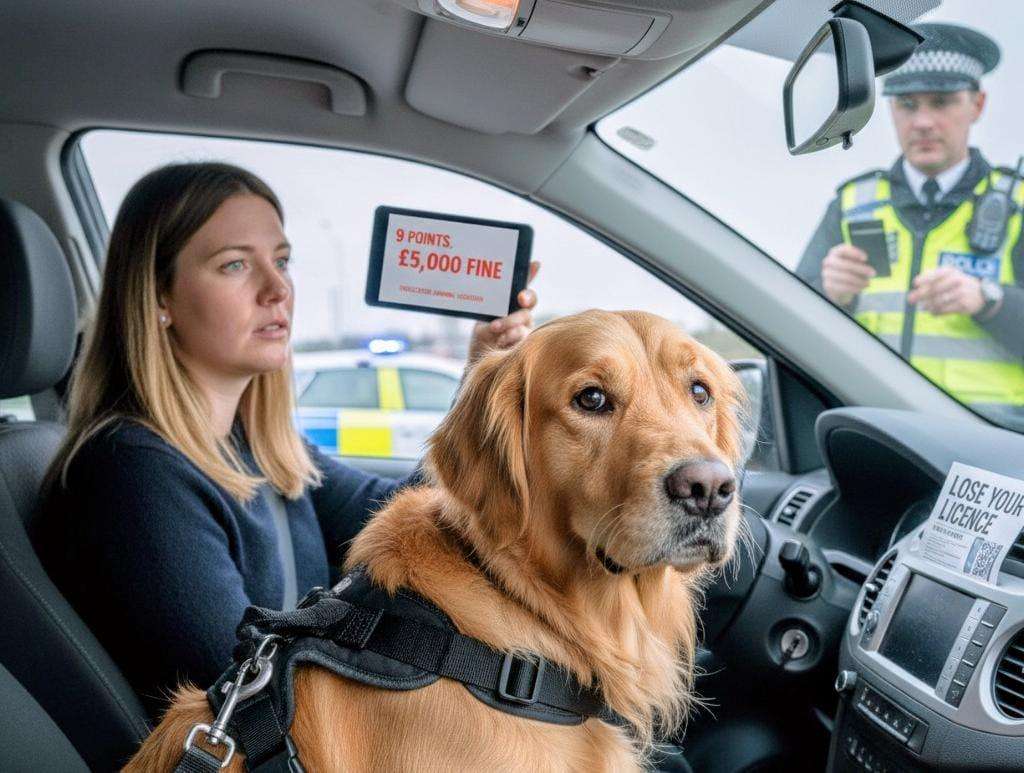Motorists who share their vehicle with a beloved cat or dog are unknowingly navigating a legal minefield that could result in devastating financial penalties, licence points, and even invalidate their car insurance. The act of simply travelling with a pet loose in a car, an image often romantically associated with freedom, is in fact a serious breach of the UK's road safety guidelines, directly exposing drivers to severe consequences.
The Hidden Dangers and Legal Reality
At the heart of the issue is Rule 57 of the Highway Code, which mandates that all animals must be suitably restrained when a vehicle is moving. This is not merely advisory but a crucial safety measure designed to prevent driver distraction and mitigate the risk of injury to the pet, passengers, and the driver during sudden stops or a collision.
When an unrestrained pet moves around the cabin—jumping onto the driver, blocking the view, or interfering with controls—it creates a clear and immediate safety hazard. Should a police officer deem this behaviour to be an instance of driving without proper control or, more seriously, careless driving, the driver could be immediately hit with a fine, potentially reaching £1,000. However, the financial jeopardy escalates dramatically if the matter proceeds to court. Here, a conviction for driving without due care and attention can attract a maximum fine of £5,000 and up to nine penalty points on the driving licence. For newly qualified drivers, accumulating this many points within two years would automatically result in the loss of their licence.
The Critical Insurance Impact
Beyond the significant legal penalties, the failure to restrain a pet can have a disastrous, often-overlooked effect on a driver’s car insurance. Most UK insurance policies operate on the condition that the driver is fully compliant with the law and the Highway Code. If an accident occurs and an unrestrained pet is found to have contributed to driver distraction or was a factor in the incident, the insurer is well within their rights to void the entire policy. This means the driver would not only face the full brunt of the legal system but would also be personally liable for all costs, including vehicle repairs, third-party claims, and potentially medical expenses for those involved.
While comprehensive car insurance covers people in an accident, it rarely extends to cover vet bills for an injured pet. The added trauma of a pet being injured in a crash, combined with the stress of a voided insurance policy, highlights the vital importance of secure travel.
Saving Motorists: Simple Steps to Stay Safe and Legal
Motorists can easily shield themselves from these massive fines and protect their insurance by strictly following Rule 57. Proper restraint is non-negotiable and provides the dual benefit of legal compliance and animal welfare.
- Implement a Physical Barrier: A dog guard installed to section off the boot area is one of the safest methods for larger dogs, preventing them from accessing the main cabin.
- Utilise Certified Restraints: For travel in the back seat, a seat belt harness specifically designed for a dog or cat, which clips securely into the seatbelt mechanism, is recommended. Crucially, the pet should be secured in a way that allows them to stand, turn, and lie down comfortably but prevents excessive movement.
- Use Pet Carriers: Smaller pets, especially cats, are safest when contained within a secure pet carrier or dog cage that is firmly placed on the back seat or boot floor, preventing it from shifting in transit.
- Avoid the Front Seat: It is strongly advised to keep pets in the back. In the event of a collision, the deployment of a front passenger airbag can cause catastrophic injuries to a pet.
By adopting these simple and inexpensive measures, pet owners not only comply with the law, safeguarding their driving licence and finances, but most importantly, ensure the maximum safety and protection for their beloved companions on every journey. The £5,000 fine is a stark reminder that pet travel is a responsibility that demands proper preparation.








.svg)


